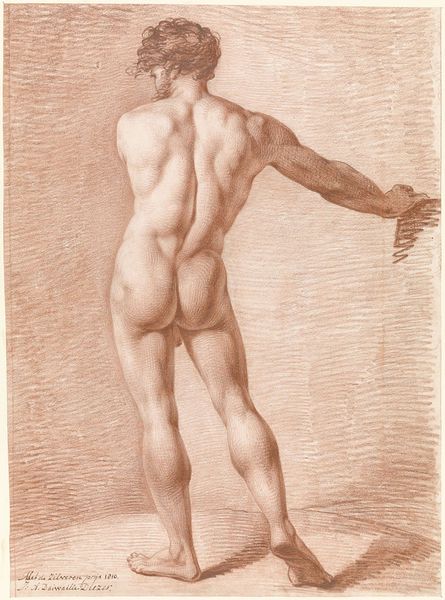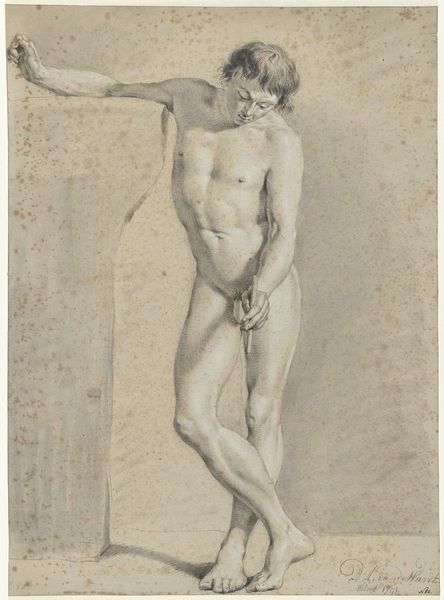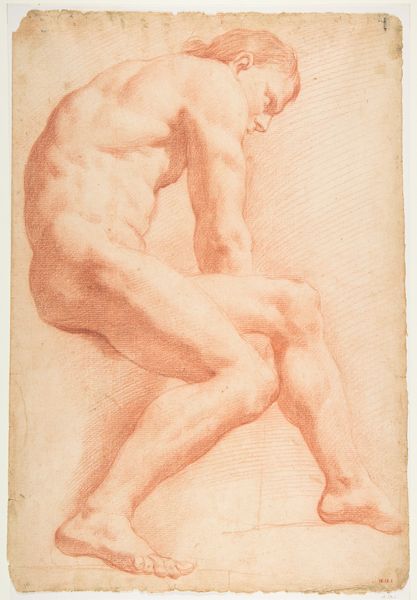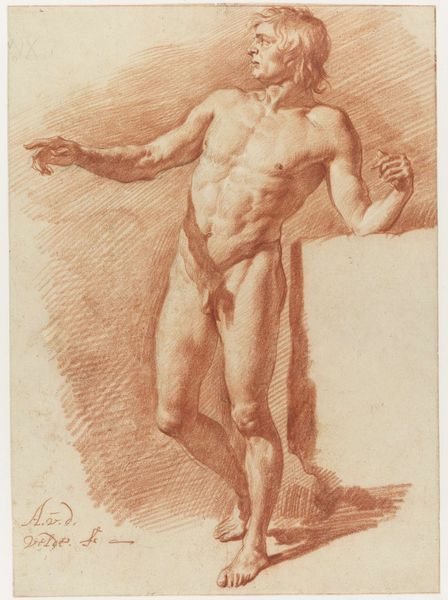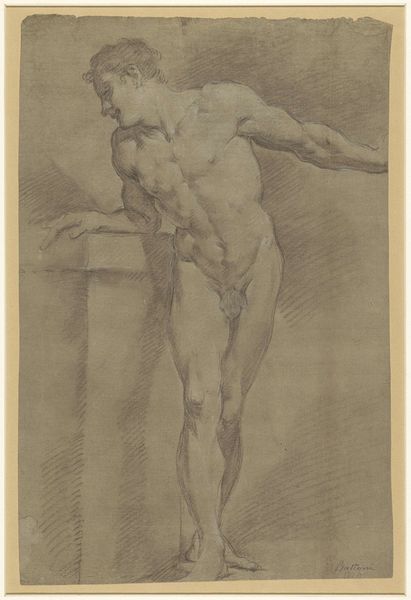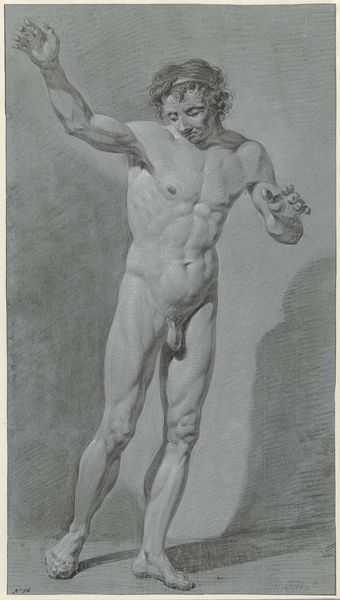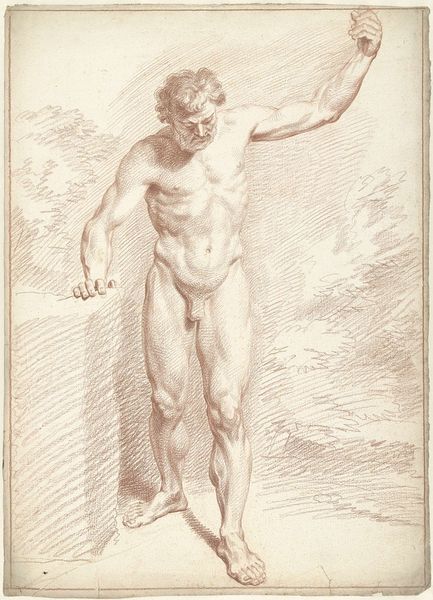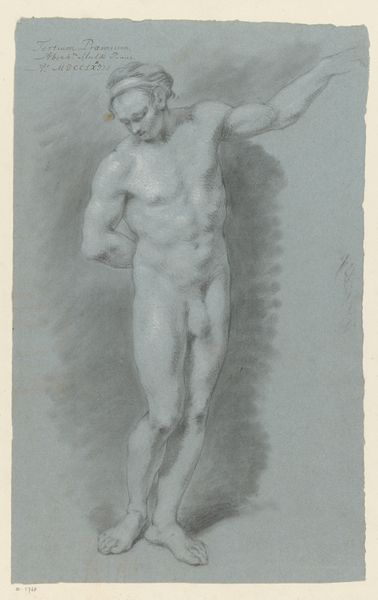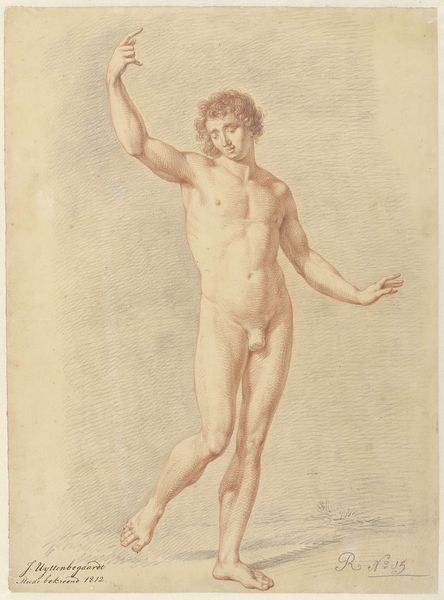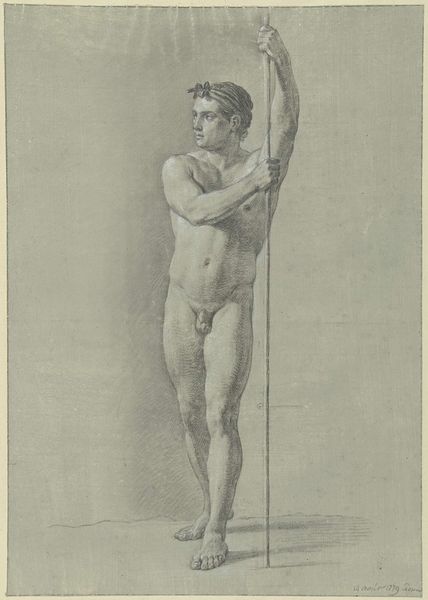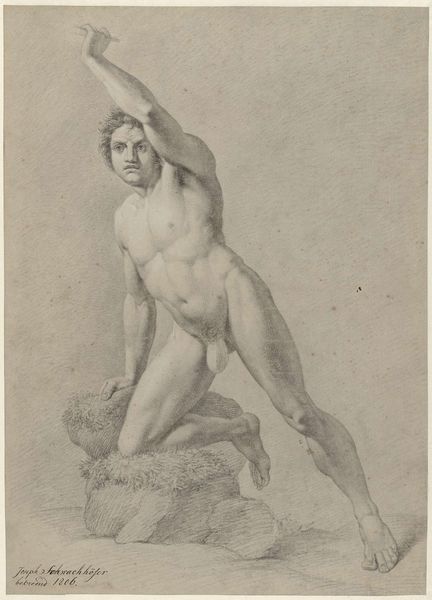
drawing, charcoal
#
drawing
#
neoclacissism
#
charcoal drawing
#
figuration
#
form
#
charcoal
#
academic-art
#
nude
Dimensions: height 613 mm, width 460 mm
Copyright: Rijks Museum: Open Domain
Curator: Welcome. Before us is Jan Willem Pieneman's "Standing Male Nude, Seen from the Back," potentially created around 1802. It is held here at the Rijksmuseum. The drawing is made in charcoal. Editor: Immediately striking, isn’t it? The figure’s tense musculature and the way he seems to be leaning slightly, gives me the impression of captured anticipation. There's also a strong sense of isolation despite the pronounced anatomy; the turn of his back implies that the scene is only concerned with form, not social interplay. Curator: Indeed. As a nude study, it exists within a historical context steeped in academic art practices and Neoclassical ideals. These studies were crucial in an artist's training; consider this study within its context in the evolution of artistic expression, in studios shaping the canon. Editor: Precisely! And that canon was always so restricted by its lack of diversity. You can read it as the establishment reinforcing the very narrow range of acceptable, usually idealized, bodies depicted throughout art history. Where is the celebration of varying body shapes, where are the images of different ethnic bodies celebrated through art education at the time? Curator: It’s easy to interpret the work through that lens today, certainly. Yet consider the use of charcoal here – a medium enabling subtleties in shadow and light which Pieneman seems keen to deploy. His meticulous detailing of the back muscles creates an interesting contrast with the absence of any background. What would a classroom exercise be at the time, may give an exercise for today, as it relates to power, gender and race. Editor: It definitely highlights the relationship between form, gender and power. The nude allows us to interrogate ideas of idealized masculinity. What’s absent from this rendering, in terms of racial specificity, and the overall effect of academic-art perpetuating narrow ideas. What is a social cost here, when that type of imagery has more visibility that other representations? Curator: Those observations are relevant. This single drawing, though seemingly simple, raises a multitude of critical points about art’s function both then and now. Editor: Exactly. Art isn't just about what’s presented, it's just as much, and maybe more so, about who gets to create it, display it, and the stories they chose to tell. Curator: And ultimately, the questions it compels us to ask ourselves about representation and our place within cultural discourse. Editor: A challenging exercise of looking backward and critically appraising what it represents today.
Comments
No comments
Be the first to comment and join the conversation on the ultimate creative platform.
